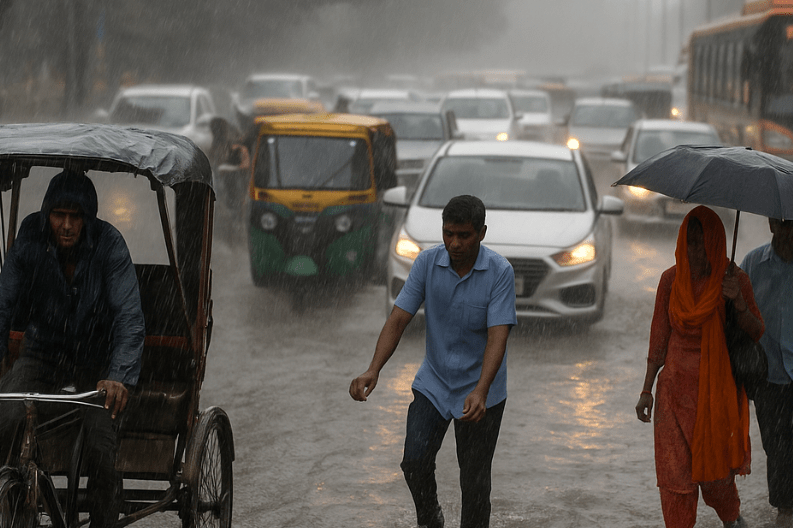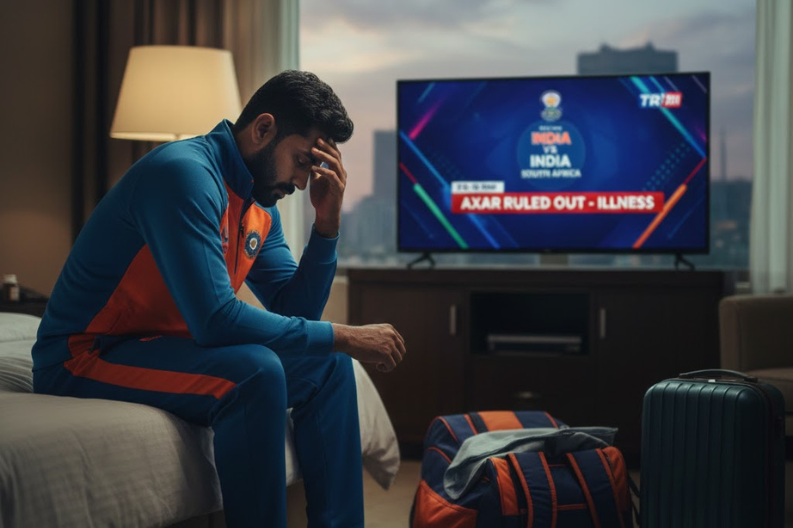On Tuesday, heavy rain hits Delhi-NCR, giving residents relief from the hot and humid weather. However, the showers also caused major problems like waterlogging, traffic jams, and delays across the city. Many people struggled to reach work or school as heavy rain combined with festive rush, making roads chaotic. According to the India Meteorological Department (IMD), this rainfall comes from different weather systems active in northern and western India.
The IMD reported that a low-pressure area has developed over the Gulf of Kutch. This system plays an important role in shaping Delhi’s weather. A trough extends from this zone toward southeast Uttar Pradesh, while another trough stretches from the Gulf of Kutch to northwest Rajasthan. Together, these troughs pull moist air from the Arabian Sea and Bay of Bengal into the Indo-Gangetic plains, which leads to heavy cloud formation and rain.
Meteorologists explain that when both troughs align, seas supply sharp amounts of moisture, often causing heavy rain. This is exactly what happened in Delhi-NCR, where clouds formed quickly and produced intense downpours. Although these rain spells usually last only a short time, they still disrupt traffic, cut power, and flood low-lying areas. Officials have warned residents to stay alert as intermittent showers may continue for the next few days.
September often brings sudden weather changes in northern India, especially as the monsoon begins to retreat. During this season, unexpected heavy rainfall impacts many urban areas. Cities like Chandigarh and Mohali also face similar challenges when intense showers flood localities. Experts stress that both the Arabian Sea and Bay of Bengal systems interact, making the rainfall more widespread and impactful.
These showers give much-needed relief from heat, yet they also increase the risk of flash floods. Roads in Delhi-NCR were trapped with vehicles, while pedestrians struggled to move through waterlogged streets. For daily commuters, the situation turned frustrating, with long delays clogging several routes.
Authorities advise people to plan travel in advance, avoid low-lying roads, and follow IMD updates closely. They also urge residents to carry umbrellas or raincoats and drive carefully. Doctors warn that people should stay alert about possible health risks like waterborne diseases after such heavy rains.
In conclusion, heavy rain hits Delhi-NCR, offering temporary cooling but also creating concerns about flooding, traffic, and daily hardships. By learning how regional weather systems work and taking preventive steps, residents can stay safe and better prepare for sudden downpours.



